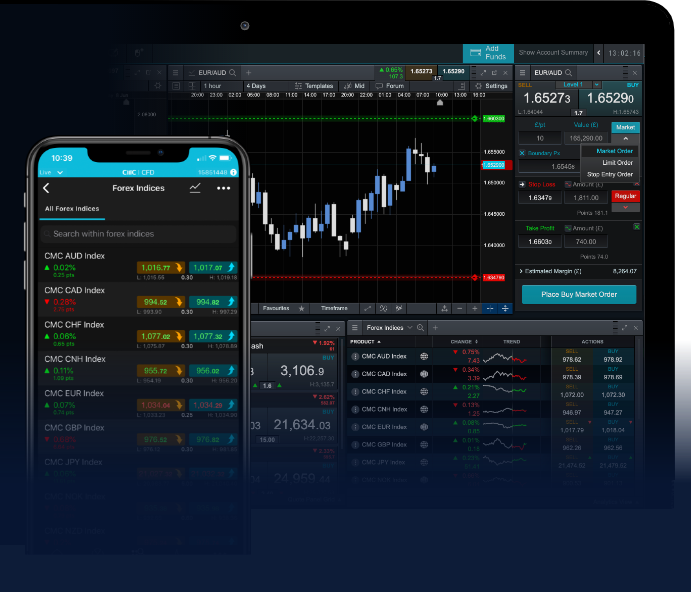
Swing trading is a popular form of trading in the Forex market that focuses on capturing short to medium-term price movements. Traders engaging in swing trading typically maintain positions for several days to weeks, seeking to profit from price shifts resulting from market trends, news releases, and other economic factors. For those interested in swing trading, platforms like swing trading forex LATAM Trading Platform can provide the necessary tools and support to refine trading strategies and execute trades effectively.
Understanding Swing Trading
Swing trading operates on the principle of ‘swing’ — traders aim to enter a trade when they believe the price is about to reverse direction. This can be triggered by various factors, including support and resistance levels, technical indicators, or fundamental analysis. In the Forex market, swing traders typically leverage technical analysis more than fundamental analysis. Understanding price action and market dynamics is crucial for identifying potential entry and exit points.
Key Principles of Swing Trading
Effective swing trading relies on several core principles:
- Trend Identification: Recognizing whether the market is in an uptrend, downtrend, or a range-bound market is fundamental. Swing traders often use moving averages, such as the 50-day or 200-day moving average, to determine the market’s direction.
- Entry and Exit Strategies: A successful trade depends on clearly defined entry and exit points. Traders should have a plan, which could include using technical indicators like the Relative Strength Index (RSI) or Fibonacci retracement levels to identify potential opportunities.
- Risk Management: Managing risk is crucial for long-term success in swing trading. Traders typically set stop-loss orders to limit potential losses and should define their risk-reward ratio before entering trades.
Strategies for Swing Trading Forex
Several effective strategies are commonly employed in swing trading within the Forex market:
1. Moving Average Crossovers
This strategy utilizes two moving averages — a shorter and a longer one. A buy signal is generated when the shorter moving average crosses above the longer one, indicating potential upward momentum. Conversely, a sell signal occurs when the shorter moving average crosses below the longer one.
2. RSI Divergence
The Relative Strength Index (RSI) can signal potential reversals when it diverges from recent price movements. For instance, if the price is making new highs while the RSI is making lower highs, it may indicate a potential trend reversal, providing a trading opportunity.
3. Breakouts
Identifying breakout points from key support or resistance levels can be an effective swing trading strategy. Traders look for increased volume and price action as the price breaks through significant levels, suggesting the potential for continued movement in the breakout direction.

Technical Indicators for Swing Trading
Utilizing various technical indicators can enhance the accuracy of swing trading decisions:
- Moving Averages: Besides crossovers, moving averages can help traders identify trends and support/resistance levels.
- Bollinger Bands: These bands can indicate overbought or oversold conditions, helping traders identify potential reversals.
- Fibonacci Retracement: This tool can help traders identify potential reversals based on the Fibonacci sequence, aiding in entry and exit strategies.
The Importance of News Events
News events can significantly impact currency prices, and swing traders need to stay informed about economic indicators, geopolitical events, and central bank policy statements. Economic calendars can help traders track these events and adjust their strategies accordingly. The key is to develop a robust understanding of how news affects currency pairs and to adapt trading strategies to capitalize on these movements.
Common Mistakes in Swing Trading
Even experienced traders can fall victim to common mistakes that hinder their success in swing trading:
- Lack of a Trading Plan: Entering trades without a well-defined plan greatly increases risk. Traders should establish clear goals, set trading criteria, and remain disciplined.
- Overtrading: Swing traders often have a tendency to enter multiple trades in quick succession, leading to increased transaction costs and emotional decision-making. Maintaining focus on quality trades is paramount.
- Ignoring Risk Management: Neglecting stop-loss orders or failing to manage risk appropriately can lead to significant losses. Each trade should be evaluated in terms of risk versus reward.
Building a Swing Trading Routine
Developing a consistent routine is vital for swing traders. This can include daily or weekly analysis of currency pairs, keeping up with news events, and reviewing trades to learn from successes and failures. Regularly assessing performance can help traders refine their strategies and improve decision-making over time.
Conclusion
Swing trading in the Forex market offers traders the opportunity to profit from short- to medium-term price movements. By mastering key principles, strategies, and risk management techniques, traders can increase their chances of success. Utilizing resources like the LATAM Trading Platform can further enhance a trader’s ability to implement effective swing trading strategies and navigate the Forex market with confidence.
Ultimately, swing trading requires discipline, patience, and a commitment to continuous learning. Whether you are a novice or an experienced trader, the journey toward mastering swing trading is paved with opportunities for growth and profitability.